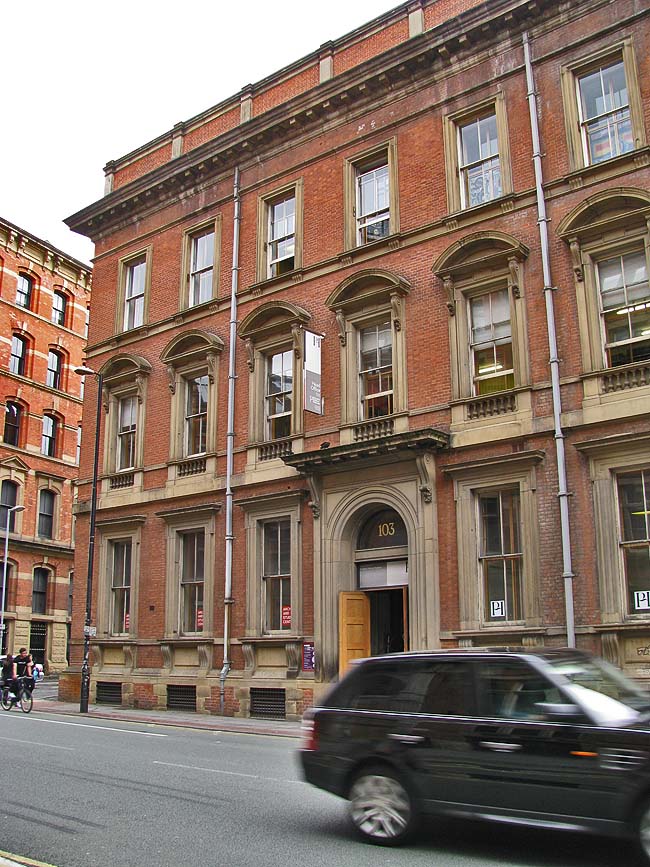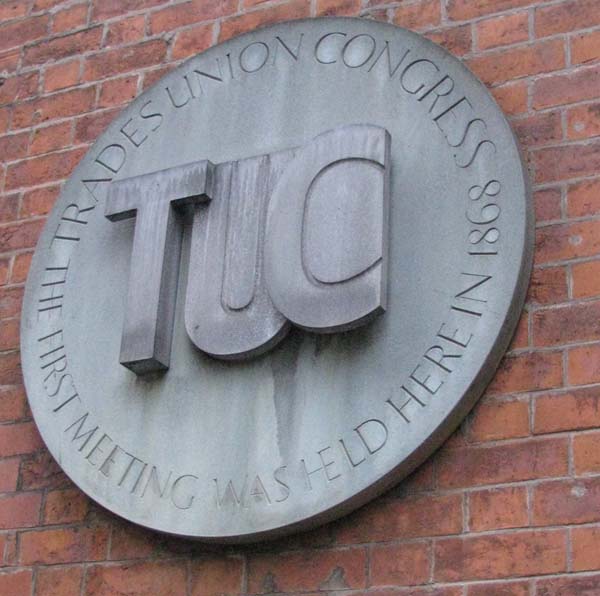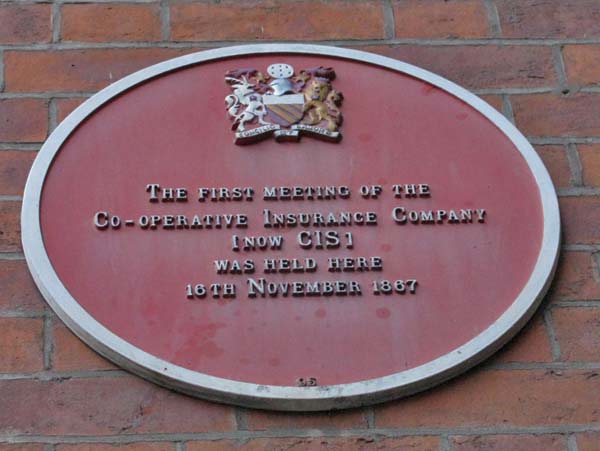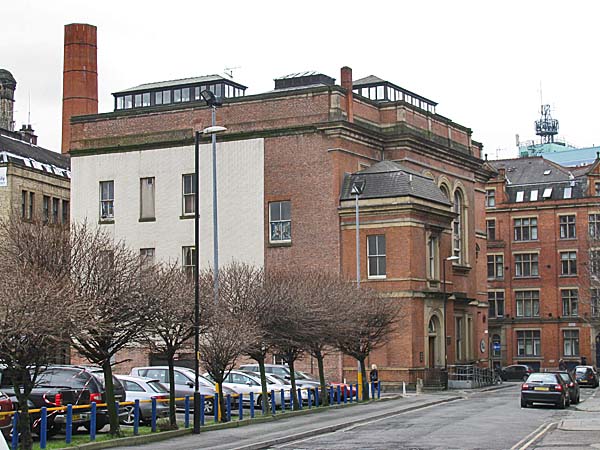|
Mechanics' Institute -
Princess Street
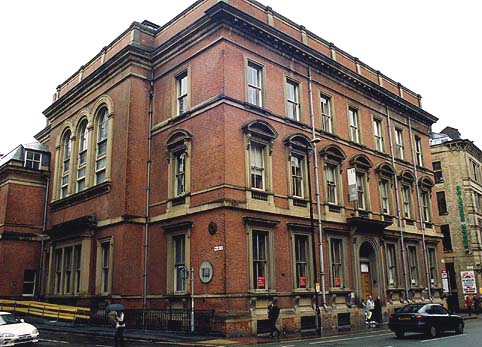 Mechanics' Institutes are to be found
around the UK and as far afield as Australia. The first
was established in 1821 in Glasgow. A meeting was
convened on April 7, 1824 in the Bridgewater Arms in
High Street Manchester to establish the Mechanics'
Institute in Manchester. The goal was to provide adult
education to working men, especially in the areas of
science and technology. Eminent men were at the meeting
including John Dalton, the father of atomic theory; Sir
Benjamin Heywood, the banker; and William Fairburn, the
engineer who worked with Stephenson on the radical
Britannia Bridge.
The Institute opened in 1825 in Cooper
Street but move to this building in 1854 when the Cooper
Street site proved to be too small for their needs. John
Edgar Gregan designed this building which fits well with
the other palazzo style buildings on Princess Street. It
has three tall storeys with a basement and hidden attic
storey behind a balustrade. It is built in red brick
with stone string courses and semicircular pediments
over the first floor windows. Working men, from
shopkeepers to labourers, attended evening classes to
study English, grammar, writing, reading, arithmetic and
Latin, as well as several foreign languages and music. 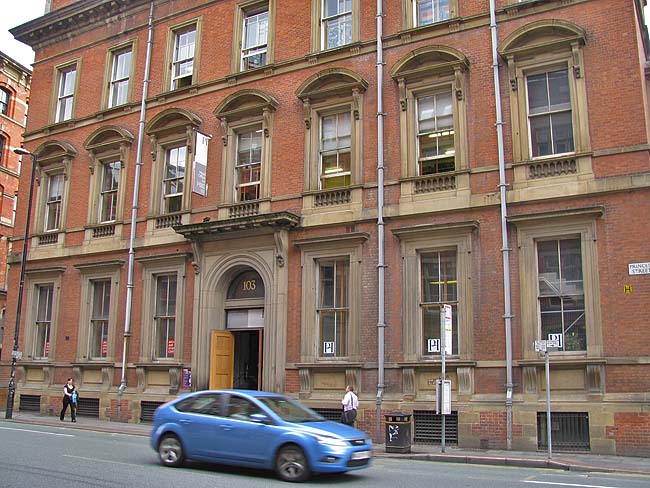 It should probably not come as much
of a surprise that this centre for working class
education was the venue for the first Trade Union
Congress that was held from 2-6 June, 1868.
It was also the birthplace of the
University of Manchester Institute of Science and
Technology (UMIST) and the Cooperative Insurance
Society.
Today it is a Grade II listed and
houses the Mechanics Institute Trust, the National
Museum of Labour History and part of the People's
History Museum.
|
